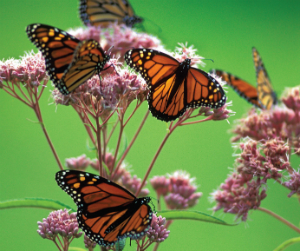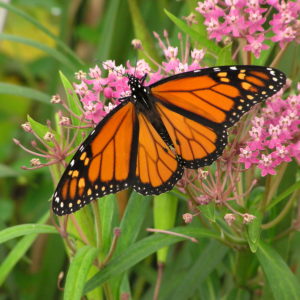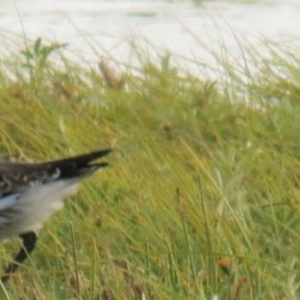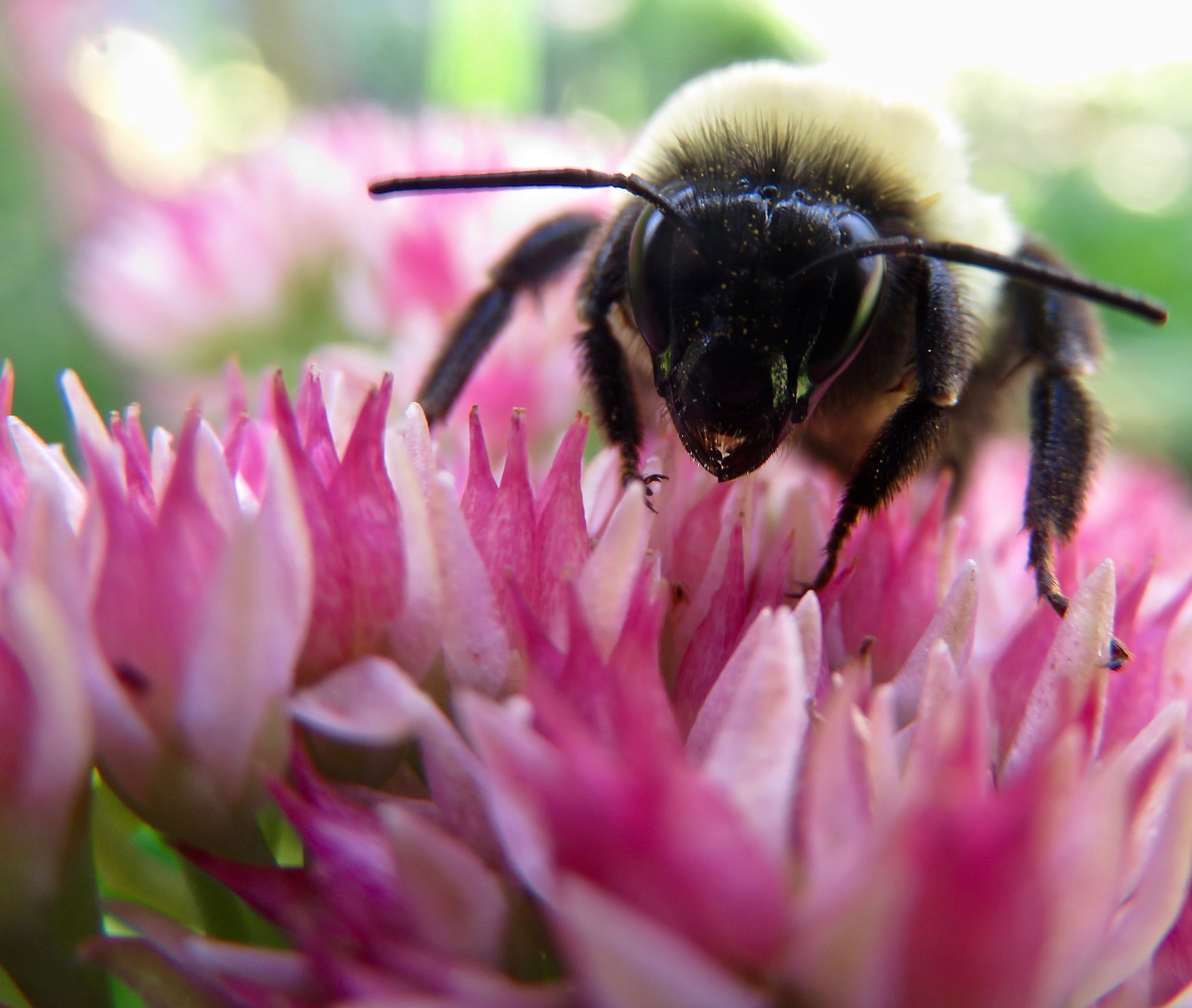Canadian scientists call for greater effort to save Monarch butterflies as their status is reassessed under the Species at Risk Act
This blog was written by Pierre Sadik, our Senior Advisor, Species at Risk.
The plight of the iconic and beautiful Monarch butterfly is still deteriorating as the Canadian government continues to lag its North American partners in helping Monarchs. In December of 2016 the Committee on the Status of Endangered Wildlife in Canada (COSEWIC) reassessed the struggling Monarch under the federal Species at Risk Act and, based on the best available science and data, came to the conclusion that the Monarch butterfly is now a “threatened” species. This represents a dramatic deterioration in assessment status from COSEWIC’s previous finding five years ago that the Monarch was only a species of “Special Concern”.
 COSEWIC’s assessment will be formally considered by the Minister of the Environment and Climate Change under the Species at Risk Act in the fall of 2017. The Minister is likely to accept COSEWIC’s reassessment and move to formally list the Monarch under SARA as a “Threatened” species. And therein lies an opportunity. Re-classifying Monarch butterflies from Special Concern to the more serious category of Threatened will require the preparation of a federal Action Plan to try to ensure the survival and recovery of the species.
COSEWIC’s assessment will be formally considered by the Minister of the Environment and Climate Change under the Species at Risk Act in the fall of 2017. The Minister is likely to accept COSEWIC’s reassessment and move to formally list the Monarch under SARA as a “Threatened” species. And therein lies an opportunity. Re-classifying Monarch butterflies from Special Concern to the more serious category of Threatened will require the preparation of a federal Action Plan to try to ensure the survival and recovery of the species.
One of the key items for the Minister to include in the Monarch butterfly Action Plan must be meaningful habitat protection here in Canada, including taking steps that finally match the commitment made by our North American partners in Monarch protection.
Monarchs fly over 4,000 kilometres south to Mexico in the fall to overwinter. They breed on their return trip, and their great-grandchildren arrive back in Canada in spring. However, the fragile and tiny wintering grounds in Mexico, where Monarchs congregate, continue to shrink due to habitat loss. A similar jeopardy awaits Monarchs here in Canada, where these insects come for the breeding and nectaring habitat along our southern border.
During the summer months, you can find adult Monarchs feeding on the nectar of wildflowers, while the caterpillars can be found feeding on milkweed plants. The primary threats facing Monarch in Canada include the widespread use of pesticides and herbicides throughout their breeding grounds, and the conversion of breeding and nectaring habitat. But milkweed, which is so essential for egg-laying for Monarchs, is not only considered an agricultural pest in many jurisdictions, but is actively suppressed under weed control regulations in Manitoba, Quebec and Nova Scotia (though it is noteworthy that the Ontario government recently removed Milkweed species from the Weed Control Act).
The U.S., Mexico and Canada recognized the Monarch’s plight in 2014 when they commissioned a tri-national task force to examine the threats to Monarch butterflies. The U.S. government followed up in 2015 by committing $3.2 million to conserve Monarch habitats and expand national milkweed planting programs. Mexico continues to support population monitoring at overwintering areas in the Oyamel highland forests. Meanwhile, the Canadian government has not yet made any significant financial investment in protecting Monarch butterflies or their habitat. The pending Monarch Butterfly Action Plan under the federal Species at Risk Act is the last, best chance the federal government has to get serious about Monarch habitat protection.



